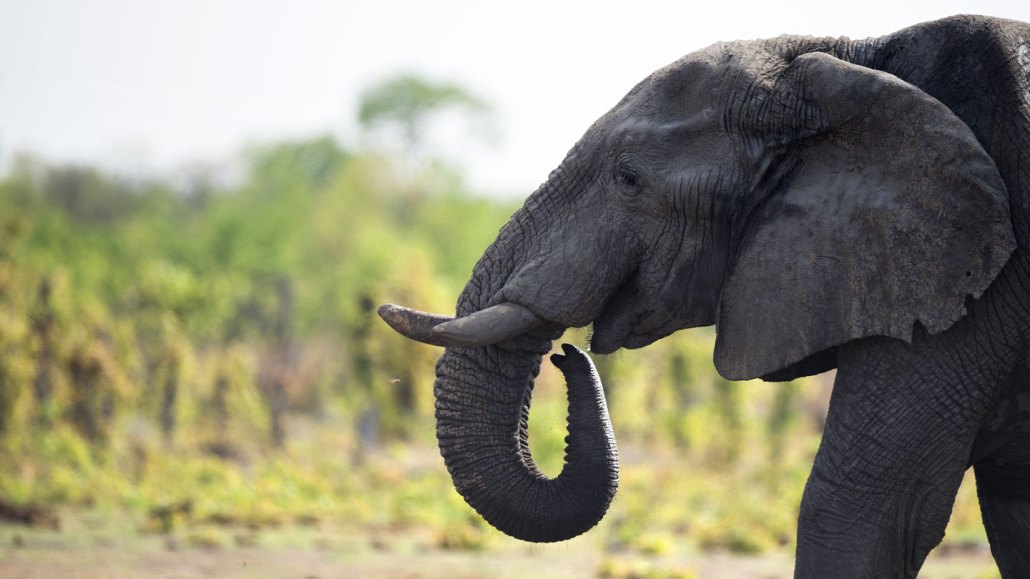
African elephants are iconic in Zimbabwe. At least 35 died there in 2020 as a result of an infection with a little-known pathogenic bacterium, new research shows.
MARTIN BUREAU/AFP via Getty Images
- More than 2 years ago
Three years ago, dozens of African elephants mysteriously died in Zimbabwe. Now scientists have confirmed their killer: a rare and little-known bacterium that can cause organ inflammation leading to deadly hemorrhaging.
The bacterium, dubbed Pasteurellaceae Bisgaard taxon 45, turned up in samples from six of 15 elephants analyzed, researchers report October 25 in Nature Communications. The pathogen is closely related to Pasteurella multocida, which is known to cause hemorrhagic septicemia, or fatal blood poisoning, but Bisgaard taxon 45 had not been previously implicated in such infections.
It’s still unclear how Zimbabwe’s elephants became infected, say Laura Rosen and her colleagues. Rosen is an epidemiologist at the Kavango-Zambezi Transfrontier Conservation Area’s Animal Health Sub-Working Group in Victoria Falls, Zimbabwe. But the results do solve one part of a mystery that has haunted efforts to protect the region’s African elephants (Loxodonta Africana), which are endangered, according to the International Union for the Conservation of Nature.
From August to November 2020, 35 elephants were found dead in northwestern Zimbabwe. In neighboring Botswana, as many as 350 elephants suddenly died the same year. The Botswana elephants’ deaths have been attributed to cyanobacteria (SN: 5/14/21).
But there is no evidence implicating cyanobacteria in the deaths of Zimbabwe’s elephants, the researchers say. Nor is their evidence anthrax, another suspected killer, is to blame: Other animals would have been affected, and the corpses lacked telltale symptoms.
Postmortem results and initial laboratory findings suggested the kind of inflammatory bleeding of internal organs and bodily tissues that P. multocida can cause. The elephants suffered from enlarged spleens and livers and extensive internal bleeding and tissue death.
While hemorrhagic septicemia has not been seen in African elephants before, it has been identified as a wildlife killer in other regions. For example, in Kazakhstan, P. multocida infections felled more than 200,000 saiga antelope in 2015 (SN: 1/29/18). Researchers suspected that higher than normal temperatures and humidity caused the microbe — which normally lives harmlessly in the antelopes’ noses — to multiply and turn deadly.
But after more sophisticated lab testing of the samples from the Zimbabwe elephants, P. multocida was ruled out too.
“It became clear from the culture samples that we did not have P. multocida but something else similar,” Rosen says. Genetic analysis and isolation of the bacterium in the six samples confirmed growing suspicions that Bisgaard taxon 45 was the culprit.
Samples from the other nine elephants did not turn up Bisgaard taxon 45 because they were too rotten, or the team was not able to get the permits needed to send them to more sophisticated labs quickly enough. But the bacterium is to blame in all the deaths, the team suspects, as well as in another 14 elephants that died suddenly in 2019. “Past cases may have been missed,” the researchers write.
Bisgaard taxon 45 has previously been isolated from tiger and lion bite wounds in humans, as well as from a chipmunk and healthy captive parrots, the researchers say. It’s not yet known if the bacterium is part of the elephants’ normal flora and whether heat, stress or other factors can cause it to multiply and become deadly. It’s also not clear how or if the highly social pachyderms might transmit the pathogen to each other.
But the findings add to the growing list of pathogens to look out for when mysterious deaths of elephants and other wildlife occur in Africa, says Shahan Azeem, veterinary microbiologist at the University of Veterinary and Animal Sciences in Lahore, Pakistan, who was not involved in the study.
It is also important for scientists to further look into which animals regularly carry the bacterium and identify their role and related environment in the spread of Bisgaard taxon 45 among African elephants, Azeem says.






